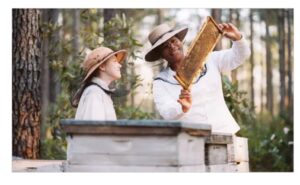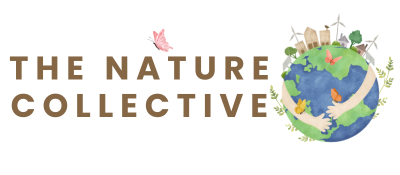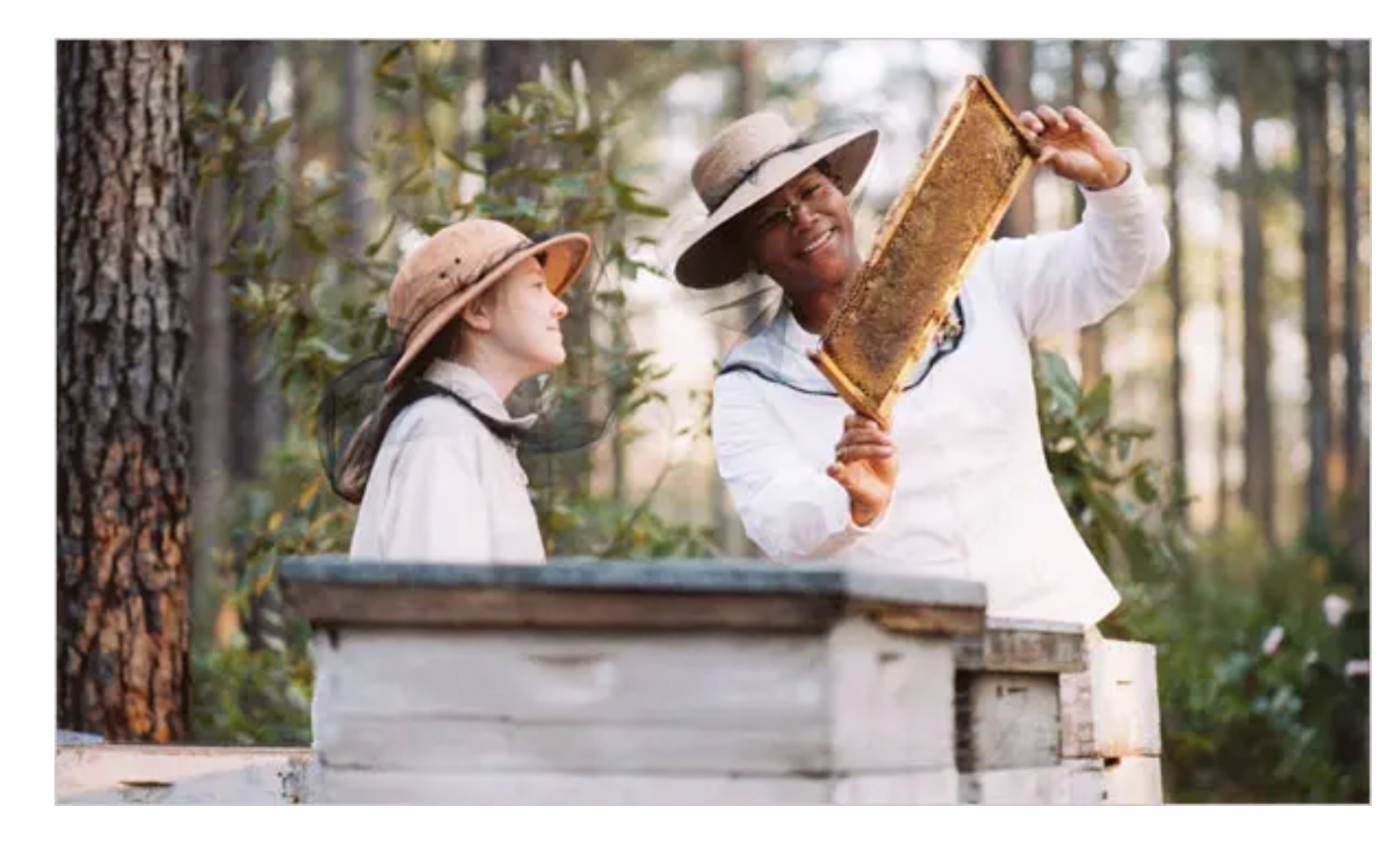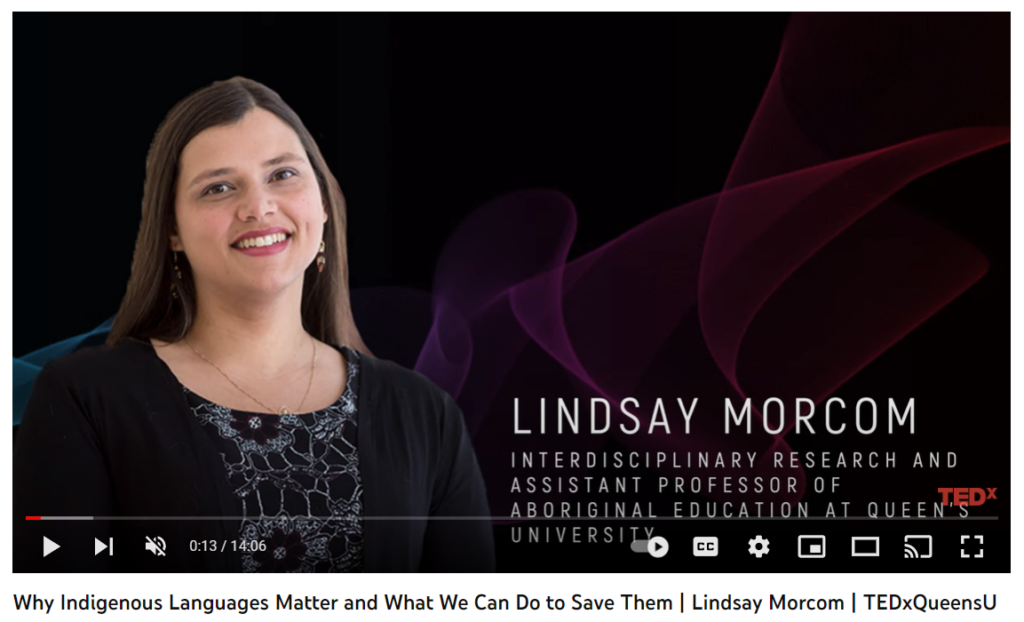THE POWER OF THE BEEEEEES

PART ONE
I recently re-watched Honey I Shrunk The Kids. (starring a really young Rick Moranis). I don’t think I had seen it since it was released in 1989.
If you aren’t familiar with it – or haven’t seen it in a long time: In the film, a struggling inventor accidentally shrinks his kids, along with the neighbors’ kids, down to the size of a quarter-inch. After being accidentally thrown out with the trash, they must work together and venture their way back through a backyard wilderness filled with dangerous insects and man-made hazards.
There is a scene in that film that involves a bee that picks up one of the “shrunken” kids – as it dive bombs into a flower….pollen flying everywhere. It’s powerful, that bee…and you can suddenly see the mission it’s on, the determination to collect this pollen.
The bee is like a tank. The bee is seemingly impervious to anything….like the fact that it has two tiny humans attached to it…or it is being swung at repeatedly with a bat, or swatted at by fearful and angry humans. The bee moves like a drone looking over the yard and the neighborhood, zipping around the clothesline, clothes flapping. A different way to see the determined but fragile looking little creatures in our gardens.
Remember The Secret Life of Bees? I loved both the book and the movie. The bees were a metaphor for community, and a sort of “spiritual thread” that ran through everything.

“Honeybees depend not only on physical contact with the colony, but also require it’s social companionship and support. Isolate a honeybee from her sisters and she will soon die.” -Sue Monk Kidd, The Secret Life of Bees
“She reminded me that the world was really one big bee yard, and the same rules worked fine in both places: Don’t be afraid, as no life-loving bee wants to sting you. Still, don’t be an idiot; wear long sleeves and long pants. Don’t swat. Don’t even think about swatting. If you feel angry, whistle. Anger agitates, while whistling melts a bee’s temper. Act like you know what you’re doing, even if you don’t. Above all, send the bees love. Every little thing wants to be loved.”― Sue Monk Kidd, The Secret Life of Bees
PART TWO
I occupy land on the shore of Lake Michigan in what is presently known as Wisconsin. This land is the home of Ho-Chunk, Menominee, Potawatomi and Ojibwe peoples. It is the historic and present-day home of peoples who were forced by colonizers to leave their ancestral lands and migrate to and through this state.
As an academic, I’m complicit in the role modern academia has in maintaining imbalanced knowledge hierarchies. And the responsibility I bear to use my advantage to work towards reconciling this imbalance….What does this have to do with bees, you ask?
Lately I’ve been doing research and teaching about the history of writing (as in the ACT of making a letter…the color of the ink – the stroke of a pen) People don’t write in this digital age the same way or with the same voracity they had to years ago…in my lifetime as a matter of fact. I have lived that change – and it is a big one. It has caused me to look at the act of writing, of language (especially written language) and how it continues to be a fluid evolving process.
The Ojibwe, Ojibwa, Chippewa, or Saulteaux are an Anishinaabe people in what is currently southern Canada, the northern Midwestern United States, and Northern Plains.
The Ojibwe are known for their birchbark canoes, birchbark scrolls, mining and trade in copper, as well as their cultivation of wild rice and maple syrup. Their Midewiwin Society is well respected as the keeper of detailed and complex scrolls of events, oral history, songs, maps, memories, stories, geometry, and mathematics.
The Ojibwe language is Anishinaabemowin, a branch of the Algonquian language family. And they have wonderful words for all things bee. Wonderful to read, wonderful to (try) to speak and wonderful to hear when spoken by a native speaker.
Ojibwe Wordlist
- Aamoo-wadiswan ……………. Beehive or wasp nest
- Aamoo …………………………….. Bee
- Waabigwan ………………… a flower
- Aamoo-ziinzibaakwad …….. honey
- Memengwaa ……………… butterfly
- Ogimaakwe …………………… queen
- Anokiiwinini ………………. a worker
- Makwa …………………………… bear
- Wiishkobaagamin …… it (liquid) is sweet
- Ziigwaan ………………………. spring
- Niibin ………………………… summer
- Miijim ……………………………… food
Word List Source: Nichols and Nyholm 1995, A Concise Dictionary of Minnesota Ojibwe
The Great Law
The following account of “The Great Law” is drawn from the version orated by Randy Councillor and recorded and revised by Art Przybilla.
Rabbit usually ate a wide variety of plants and as a result did not overtax any one species of plant. But one summer the roses were especially delicious, and so Rabbit ate nothing but roses. Roses eventually became scarce and as a result Bee was unable to make as much honey as usual.
Bee did not know the cause of the rose shortage, and frequently lamented the problem to all of the other animals. The other animals lost patience with Bee’s complaints and ignored him. Hummingbird, though, listened to Bee and to determine the extent of the issue, went on a search for roses. After searching widely but finding no roses, Hummingbird and Bee called a Great Council of all the animals.
Even at the Great Council, the other animals did not listen to Bee, until Bear realized and explained that the lack of roses meant that he would not have enough honey for winter, and would have to eat some of the other animals instead. The other animals then became concerned that they might be eaten by Bear or, like Fox, have to compete with Bear for food.
The birds then flew to the four directions of the earth in search of roses. All were unsuccessful except Hummingbird who returned with a single half-dead Rose. The animals used all of their combined knowledge to nurse Rose back to health. When she was strong enough to talk, the animals asked what had happened and Rose explained that Rabbit had eaten all of the roses except for her.
Bear was so angry that he yanked Rabbit by the ears, which then became stretched. Bear eventually tossed Rabbit into the angry crowd and told them to kill Rabbit. But Rose told them to stop.
Rose explained that all of the animals were at fault—even Bear—as they failed to listen to Bee when Bee first told them about the issue. In fact, the animals had broken the greatest of all the Great Laws, namely, the one that “tells us that all living things must watch over all other living things and Mother Earth.” And so Rabbit’s ears remained stretched to remind all to listen, and roses received thorns to keep them safe from rabbits. This story again illustrates the tripartite structure of Anishinaabe constitutionalism.
This story identifies the three core constitutional features through the stacking errors of the animals in the story. It requires the reader to engage with it in a slightly different way, and to reason for oneself. It also introduces several Anishinaabe constitutional principles (which are not about rules, but rather how to orient oneself in relationship); we address only one of these here: the democratic principle.
With respect to the first structural feature of Anishinaabe constitutionalism— interdependence—each of the animals lost sight of the fact that it is in a relationship of interdependence with the others. Rabbit failed to appreciate how his eating all of the roses would affect Bee’s ability to make honey, which would affect Bear’s diet, which in turn would affect other animals who might then be eaten by Bear or have to compete with Bear for food.
The other animals also failed to appreciate this interdependence when they ignored Bee’s initial complaints. With respect to the second structural feature of Anishinaabe constitutionalism—mutual aid—the majority of animals declined to render aid, opting out of the mutual aid framework which involves a cycle of (i) gifting, which generates (ii) gratitude, which in turn generates (iii) reciprocity, which then generates further (i) gifting, and so on.
When the animals initially ignored Bee, they withheld their gifts—such as the birds’ ability to search for roses—which would have helped to meet the needs of all other animals. With respect to the third structural feature of Anishinaabe constitutionalism—harmony— when the animals opt out of the mutual aid framework, closing themselves off from one another, the result is a sequence of calamity culminating in Rabbit’s ears getting stretched and Rabbit almost being killed.
Harmony is finally restored when the animals are reminded of their responsibility to “watch over” each other, which they can fulfill by rendering mutual aid. Rabbit’s stretched ears serve as an ongoing reminder of this responsibility.
In this way, the Anishinaabe constitutional order—including interdependence, mutual aid, and harmony—is encoded on the physiognomy of rabbits. This story also illustrates the democratic principle. Although we use the term ‘democratic principle’, we mean something closer to participatory democracy, as opposed to representational democracy.
Once Bee and Hummingbird realized the extent of the problem, rather than try to address it by themselves, they called a Great Council of all the animals. Each animal used its unique gifts to contribute toward the solution. The birds flew in all directions to find signs of roses and when Rose was found half-dead, they all used their gifts to nurse Rose back to health. No animal was left out of the decision-making process.

“We lived for honey. We swallowed a spoonful in the morning to wake us up and one at night to put us to sleep. We took it with every meal to calm the mind, give us stamina, and prevent fatal disease. We swabbed ourselves in it to disinfect cuts or heal chapped lips. It went in our baths, our skin cream, our raspberry tea and biscuits. Nothing was safe from honey…honey was the ambrosia of the gods and the shampoo of the goddesses.” ― Sue Monk Kidd, The Secret Life of Bees
This is the first in a series of blog posts about the places, ideas and connections that Lanne Wise muses about while wandering around TNC sites. Lanne is a grateful member of TNC and also keeps a blog, Small Things Worth Seeing, here.


